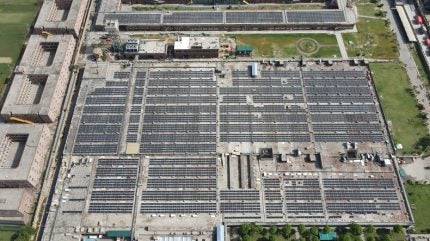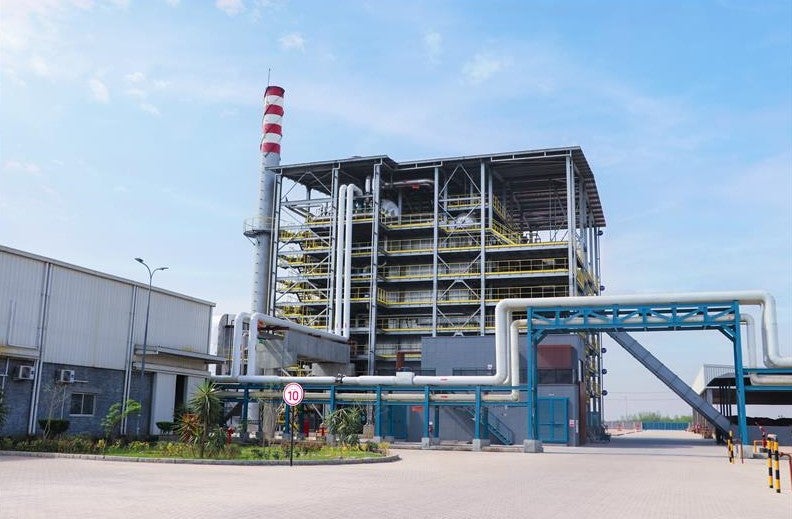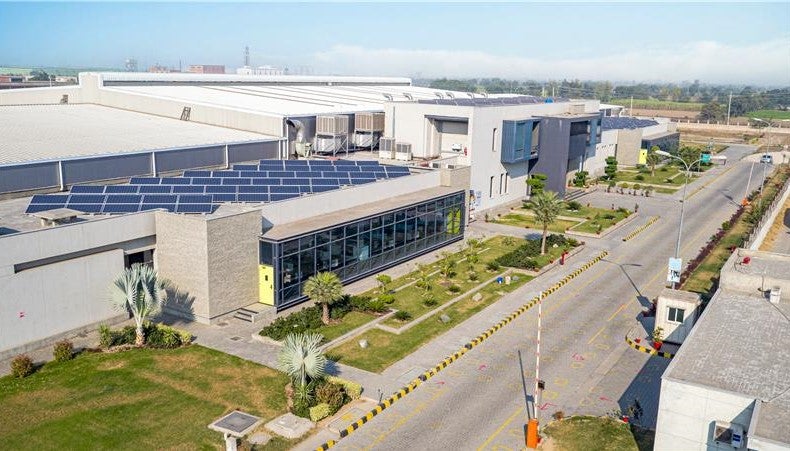
Every sustainability commitment made on a brand’s website eventually lands on a factory floor. The industry’s annual CO2 emissions, contributing about 6-8% of the global total according to the International Labour Organisation (ILO), must be tackled where textiles actually come to life: in manufacturing facilities across Asia, Africa, and Latin America.
The textile industry stands at a crossroads. The pressure to decarbonise is mounting as brands make bold commitments, regulations tighten, and consumers demand accountability. But the real work — implementing change — rests with suppliers who face unique operational and financial constraints that aren’t always visible in sustainability discussions.
This shift isn’t about installing solar panels or tweaking a process here and there. It’s about rethinking how textiles are made, questioning outdated systems, and addressing practical on-ground realities. The challenge isn’t that solutions don’t exist, it’s that scaling them is an uphill battle.
The energy equation: who pays for decarbonisation?
Most of the industry’s energy consumption is said to occur in dyeing and finishing, yet access to renewable energy remains inconsistent across manufacturing regions. Some have the infrastructure to support large-scale adoption, while others are still locked into fossil fuel dependency.
There’s no debate that energy transition is necessary, but the approach raises questions: Who bears the cost? Should suppliers shoulder it alone? Why aren’t brands investing more directly in supply chain decarbonisation beyond demanding emissions reductions? Meanwhile, suppliers operate on tight margins with limited access to capital for upgrades.
According to McKinsey, most decarbonisation actions in fashion manufacturing can be implemented at a cost of less than $50 per tonne of CO2, with limited impact on production costs. This finding presents an opportunity for strategic investment across the value chain, but requires thoughtful cost sharing between brands and suppliers.

US Tariffs are shifting - will you react or anticipate?
Don’t let policy changes catch you off guard. Stay proactive with real-time data and expert analysis.
By GlobalDataProgressive manufacturers are making significant investments. Interloop Limited in Pakistan powers 51% of its energy through renewables, having phased out coal entirely. Pratibha Syntex in India, with support from Good Fashion Fund’s $4.5m loan, is saving 50% in energy water, and materials.
While financing options are emerging, navigating them remains a challenge. In Pakistan, the State Bank’s green schemes and NAMA Support Project’s low-interest loans for textile SMEs, remain insufficient for the scale of transformation needed. The funding landscape is fractured, creating uneven access that disadvantages suppliers working across multiple brand portfolios.
Achieving net-zero industry-wide requires financing models that create equitable distribution of costs. What’s missing is coordinated investment that matches the scale of our climate ambitions. Brands with decarbonisation funds tend to invest where they can book the maximum advantage for their product footprints. For multi-category suppliers working with several customers, this complicates funding access and slows progress.

Credit: Interloop.
Regulations: a compliance burden or an opportunity?
The wave of climate regulations, the Corporate Sustainability Reporting Directive (CSRD), the EU’s Fit for 55 package, the US Inflation Reduction Act, and Carbon Border Adjustment Mechanism (CBAM), is designed to drive accountability. But for suppliers, it often translates into another layer of complexity they must navigate alone. Many operate in regions where regulatory frameworks are still evolving, making compliance both a logistical and financial challenge.
Some might argue compliance is simply the cost of doing business today, but this overlooks major regional disparities in infrastructure, resources, and governmental support. While EU suppliers can access programmes like the Just Transition Fund to finance their green transition, manufacturers in Bangladesh, Pakistan, and Sri Lanka often lack similar support mechanisms. A one-size-fits-all approach won’t work.
Proactive suppliers are aligning with science-based targets despite limited regional support — Interloop targets a 51% reduction in Scope 1 and 2 emissions, 30% in Scope 3, investing in LEED-certified manufacturing, clean energy, and material traceability. DBL Group in Bangladesh has reduced emissions by 30% in 2023 compared to its 2020 baseline, showing progress in challenging conditions.
Without broader policy incentives, like subsidies or tax breaks, even those leading the transition risk decarbonising themselves out of business. What’s missing is a bridge: regulatory frameworks that recognise supply chain diversity and create viable transition pathways for different players. Without it, we’ll see more compliance fatigue than real impact.
The investment gap: from rhetoric to resources
The biggest roadblock to decarbonisation is misaligned incentives. Brands prioritising cost and speed make long-term sustainability investments difficult to justify, especially when the benefits, both environmental and financial, are realised downstream in the supply chain.
Renewables, efficiency upgrades, and low-impact materials carry high upfront costs, yet funding remains largely inaccessible to end suppliers. Financial institutions cite high risks and uncertain returns, while limited green loans often come with rigid terms and high interest rates. Many suppliers turn to self-financing, which limits how quickly solutions can be implemented.
The McKinsey “Fashion on Climate” report indicates that decarbonising the fashion industry requires approximately €50bn ($54bn) annual investment by 2030 in upstream production phases where suppliers operate. Even modest energy efficiency projects often require substantial capital that many manufacturers struggle to secure.
The gap between global climate finance and factory-level implementation is stark: Green Climate Fund have allocated over $300m to Pakistan, yet these resources rarely reach textile manufacturers directly. While Proparco’s collaboration with APTMA shows potential, manufacturers still face an immediate capital deficit for emissions reduction projects with proven ROI.
Programmes such as the Apparel Impact Institute’s Clean by Design highlight how brand-led investments can drive decarbonisation with an average 9% emissions reduction and approximately 14-month payback period, proving sustainability can be financially viable when properly structured.
Interloop’s partnership with Target through Clean by Design delivered tangible results, implementing 10 best practices to reduce emissions and water use in its hosiery plant, with plans to scale across other units. The pilot shows how direct brand-supplier collaboration creates shared value from efficiency gains and reduced environmental impact.
Multi-stakeholder efforts like UNFCCC’s Fashion Charter, the Sustainable Apparel Coalition (SAC), and IFC’s Partnership for Cleaner Textiles (PaCT) provide frameworks and funding mechanisms. However, participation remains uneven, and many small to mid-sized manufacturers struggle to access support. These initiatives must move beyond voluntary commitments to structured funding models.

Credit: Interloop.
Circularity: moving beyond pilot projects
Recycling production waste, designing for longevity, and tracking material flows —circularity is gaining traction, but it’s still far from mainstream. Most supply chains weren’t built with circularity in mind, which means retrofitting these practices takes time, investment, and buy-in from all stakeholders.
Some manufacturers are pushing ahead. Interloop is closing the loop by turning textile waste into new yarns and reducing material loss through digital waste mapping. In Thailand, Indorama Ventures has committed to recycling 750,000 tonnes of post-consumer PET bottles into textile fibres annually by 2025.
But without large-scale commitments from brands to source these materials, circularity remains fragmented rather than an industry-wide shift. It needs to move beyond pilot projects and become an integrated part of sourcing strategies.
The emissions paradox: growth versus reduction targets
The climate equity challenge facing the textile industry reflects broader global imbalances. Pakistan contributes less than 1% of global emissions but faces the same reduction targets as major industrial emitters. According to Our World in Data, per capita CO2 emissions in 2021 showed stark disparities: the average US citizen produced 14.9 tonnes, while Pakistan’s per capita emissions were only 1.06 tonnes.
The “common but differentiated responsibilities” principle from the 1992 UN Framework Convention on Climate Change and reaffirmed in the 2015 Paris Agreement, acknowledges countries’ varying capabilities and historical contributions to emissions. Yet textile decarbonisation frameworks rarely reflect this nuance, often applying uniform standards across different economic contexts.
This creates a paradox where growing manufacturers in developing economies must simultaneously increase production while drastically cutting emissions, often without the technological or financial resources available to their counterparts in developed nations.

Credit: Interloop.
Collaboration in action: models that work
Decarbonisation is not just about meeting sustainability targets, it’s about long-term industry survival. Cross-border initiatives are catalysing promising change in Pakistan’s textile sector. Through Bestseller’s FWD >> ENV Programme, Interloop has identified pathways to reduce water use by 9% and carbon emissions by 10% across its hosiery plants.
Simultaneously, the Sweden-Pakistan Sustainable Textile Platform, backed by the Swedish Embassy with IKEA and H&M, is accelerating renewable energy adoption and circular economy models. What sets these initiatives apart is their combination of technical expertise, implementation support, and continuous performance tracking.
H&M Group invested SEK1.7bn ($170m) in 2024 on decarbonisation across their value chain, including co-investing in energy efficient projects with suppliers in Bangladesh. Similarly, VF Corporation’s “Green Bond” sourcing programme gives preferential business allocation to suppliers demonstrating strong sustainability performance.
Manufacturers are engaging with their own Scope 3 partners, such as farmers at the bottom of the value chain, by adopting traceability platforms like Looptrace to measure, report, and reduce their carbon footprint. Better Cotton has also been developing initiatives to improve traceability across the cotton supply chain.
The only way forward is collective action, where decarbonisation is treated as a shared responsibility, not a competitive advantage. Instead of fragmented roadmaps for each customer, suppliers need consolidated baselines, preferential purchasing agreements, and financial incentives for those leading the transition.
If decarbonisation efforts aren’t uniformly adopted, cost imbalances will leave proactive suppliers at a disadvantage.
A call for meaningful partnership
We invite brands to join suppliers in accelerating the industry’s transformation through:
- Establishing co-investment funds that directly support supplier decarbonisation with shared risk
- Implementing price premiums for verified low-carbon products
- Developing long-term purchasing agreements that provide financial security for sustainability investments
- Creating regional adjustment factors that recognise the diverse starting points of global suppliers
Suppliers are taking steps, but they need more than expectations and compliance mandates. They need investment, technology transfer, and systemic shifts that acknowledge the complexities of manufacturing at scale. The shift from transactional relationships to strategic brand-supplier partnerships isn’t just necessary, it’s overdue.
At Interloop, we have experienced first-hand how shared investment can accelerate progress. Our industry’s decarbonisation depends on whether we can move beyond rhetoric to create financial mechanisms, implementation support, and fair value distribution across the supply chain. The question isn’t whether we can decarbonise, its whether we’re willing to do it together.
About the author:
Noor Jehan Sadiq is Head of Marketing Communications at Interloop Limited, where she leads brand strategy and marketing for one of Pakistan’s largest textile manufacturers. Over the past five years, she has helped shape Interloop’s voice in global markets. She holds a Master of Science in Historic Preservation from the University of Pennsylvania, bringing a creative perspective grounded in research and design.





